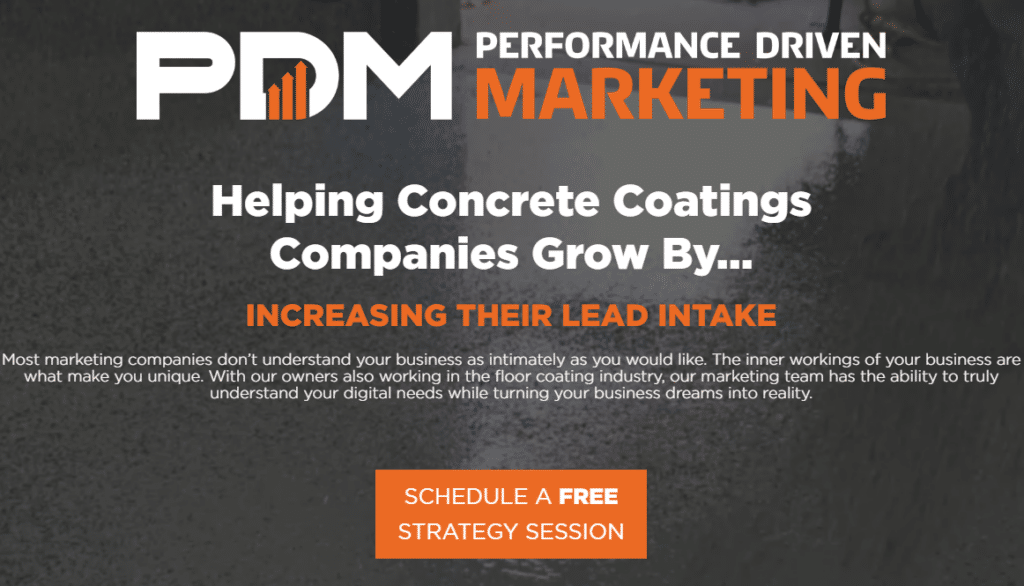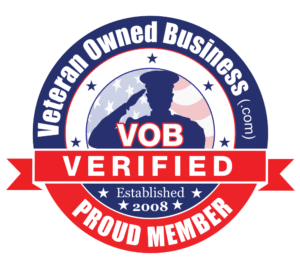
Creating a landing page is a great way to significantly boost your conversion rate, guiding visitors to take desired actions. However, creating a compelling landing page, especially if you’ve never done it before, can be difficult.
At Performance Driven Marketing, our team understands how beneficial the addition of a landing page can be to your marketing campaign. If you’ve noticed a lull in web visitor conversions, a new landing page may be the perfect way to generate new leads.
In this blog, we’ll explore what a landing page is, why they’re crucial for your marketing strategy, and what elements are essential to include.
What is a Landing Page?
A landing page is a web page created to convert website visitors into lifelong customers. The objective, also known as a call to action (CTA), of a landing page might be to get visitors to fill out a contact form, download your brochure, sign up for a weekly or monthly newsletter, or make a purchase.
Website visitors may end up on a landing page when they click on a link that you sent through an email or ads you’ve created for Google, YouTube, or Facebook. While your website will encourage visitors to explore and learn more about the unique services and products you provide, a landing page is designed with the singular goal of increasing your visitor-to-customer conversion rate.
Some businesses that may benefit from incorporating a landing page into their marketing campaign include:
- Real Estate Agencies
- Automotive Services
- Home Services
- Legal Services
- Healthcare Providers
- And Many More

How is a Landing Page Different from a Contact Us Page?
A landing page and a “Contact Us” page serve distinct purposes and are often designed to meet specific goals. Your landing page is created for targeted marketing campaigns, focusing on a single objective, such as capturing leads or promoting products. It features tailored content, persuasive copy, and a strong call to action, guiding visitors toward a specific conversion without distractions.
A “Contact Us” page is a standard element of a website, offering general contact information such as phone numbers, email addresses, and a contact form. Its purpose is to provide a way for visitors to reach out for various reasons not necessarily tied to a specific campaign. It is more informational and less driven by a singular marketing goal. While your landing page aims to convert traffic into leads, a “Contact Us” page promotes communication and customer service.
What Should You Include on Your Landing Page?
If you are considering adding a landing page to your website, there are a few things that you need to add to ensure it is successful. The most important aspects of your landing page include:
Hero Photo
One of the first things visitors should see when they get to your landing page is a high-quality hero photo. Your chosen photo should be engaging and may be used to build trust and convey a message in ways that text alone may not be able to do. In some cases, you may also choose to use a video or graphic to draw in customers when they reach your landing page.
Clear Headlines
Your headline should be the first thing web visitors see when they arrive at your landing page, along with your chosen visual aids. Your headline should immediately convey the value of the good or service you’re offering. Your headline should be incredibly clear and concise but also compelling enough to encourage visitors to learn more.

Engaging Subheads
Your subhead, which is located directly below the headline, should provide more details, further pushing the mission of your headline. The copy included in your subheadings should complement the offer you made in your headline, elaborating on the benefits of the service or good you’re providing.
Persuasive Copy
The copy on your landing page should be persuasive and focus on the benefits of your offer. You may choose bullet points or short paragraphs to ensure the text is scannable for visitors who are quickly moving across the page. Your copy should also discuss potential challenges your visitors are experiencing and how your offer provides a reliable solution.
Call to Action
Your call to action is the most important element on your landing page. When you create it, it should be compelling and prominently displayed. Customers should understand what you are trying to accomplish when they see your CTA. It may include a button that uses language such as “sign up now,” “get started today,” or “learn more.”
Simple Contact Forms
If the goal of your landing page is to collect information from your web visitors, you should ensure the contact form attached to it is straightforward and asks for only necessary information. If your contact form is too long and complex, visitors may be less interested in completing it.

Testimonials
Actions speak louder than words, and while your copy may be persuasive, it is even more encouraging for visitors to see testimonials from real customers. Testimonials show them that existing customers have had positive experiences with you. In addition to testimonials, you may want to include case studies or logos of well-known clients to enhance your credibility.
Trust Indicators
Visitors should be able to find security badges, privacy policies, and guarantees as they reach the end of your landing page. In a world where privacy is paramount, any trust indicators you can provide them with can help reduce anxiety and assure your visitors that their information is safe with you.
Create the Perfect Landing Page with PDM
If you want to incorporate landing pages into your marketing efforts, our team at Performance Driven Marketing is here to help. For over a decade, we’ve provided expert marketing services to businesses across the nation. With this experience, our team of expert graphic designers, web developers, content writers, and SEO specialists can create a landing page that helps you stand out from the competition.
If you’re ready to create your most successful landing page yet or if you’d like to learn more about our marketing services, don’t hesitate to contact us today.



